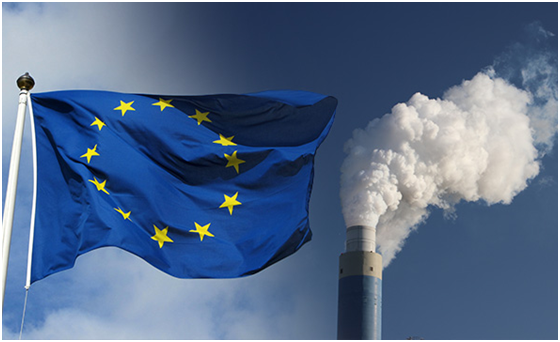Business
商業
European Industry
歐洲工業
A green and level field
一個綠色的平等的領域
Europe's firms size up the prospect of a carbon tariff.
歐洲企業評估征收碳關稅的前景。
Since the EU launched its emissions trading system in 2005, industries have followed divergent greenhouse-gas trajectories. The power sector has cut them by half. Among cement- and steelworkers, which got free allowances for four-fifths of their exhausts to stop the shift of production abroad, they have barely budged.
自從歐盟在2005年啟動碳排放交易體系以來,各個行業都在遵循不同的溫室氣體排放方案。電力部門已將碳排放削減了一半。在水泥和鋼鐵行業中,為了避免生產轉移到國外,他們五分之四的排氣量能夠獲得免費補貼,因此他們在碳排放上幾乎沒有讓步。

The European Commission wants to end this handout. Last month the EU’s executive arm proposed new rules to help the bloc meet its goal of cutting emissions by 55% from levels in 1990 by 2030. One proposal would withdraw free allowances for producers of aluminium, cement, fertiliser, iron and steel, and levy import tariffs on these products based on their carbon content. This “carbon border adjustment mechanism” (CBAM) aims to level the playing field. If Europe’s steel mills must pay for the carbon they spew, so will their Chinese rivals selling to the EU.
歐盟委員會希望結束這種補貼。上個月,歐盟執行機構提出了新的規定,以幫助歐盟實現到2030年的減排目標,即溫室氣體排放量在1990年的基礎上減少55%。其中一項提議是取消對鋁、水泥、化肥、鋼鐵生產商的免費補貼,并根據這些產品的碳含量征收進口關稅。這種“碳邊界調整機制”(CBAM)旨在創造公平的競爭環境。如果歐洲的鋼鐵廠必須為它們排放的碳買單,那么他們的中國競爭對手也將如此。
The EU plan is just that for now. It needs the nod from the European Parliament and member states. China says it violates World Trade Organisation rules; others may challenge it. If enacted, CBAM would not start until 2026 and take a decade to roll out. Still, it is a test case that governments and firms elsewhere will study.
歐盟的計劃只是暫時的。它需要得到歐洲議會和成員國的同意。中國稱其違反了世界貿易組織規則;其他國家可能會對此提出質疑。如果計劃通過,CBAM要到2026年才開始實施,并需要10年時間才能推廣。盡管如此,這仍然是一個值得其他地區政府和企業研究的初步案例。
ICIS, a research firm, predicts that by 2030 CBAM-covered companies will receive 145m fewer tonnes of annual allowances than they would have done. That adds up to about 12bn euro ($14.2bn) a year, or 2% of the newly covered sectors’ sales, according to the commission’s forecasts. Four-fifths of the burden will fall on steel and cement.
研究公司ICIS預測,到2030年,CBAM覆蓋的公司每年獲得的補貼量將比原來少1.45億噸。根據歐盟委員會的預測,這總共約每年120億歐元(142億美元),占新覆蓋行業銷售額的2%。五分之四的責任將落在鋼鐵和水泥行業身上。
譯文由可可原創,僅供學習交流使用,未經許可請勿轉載。











